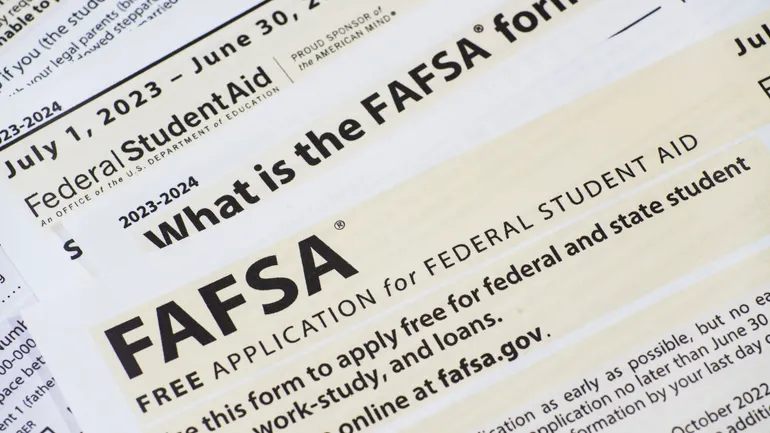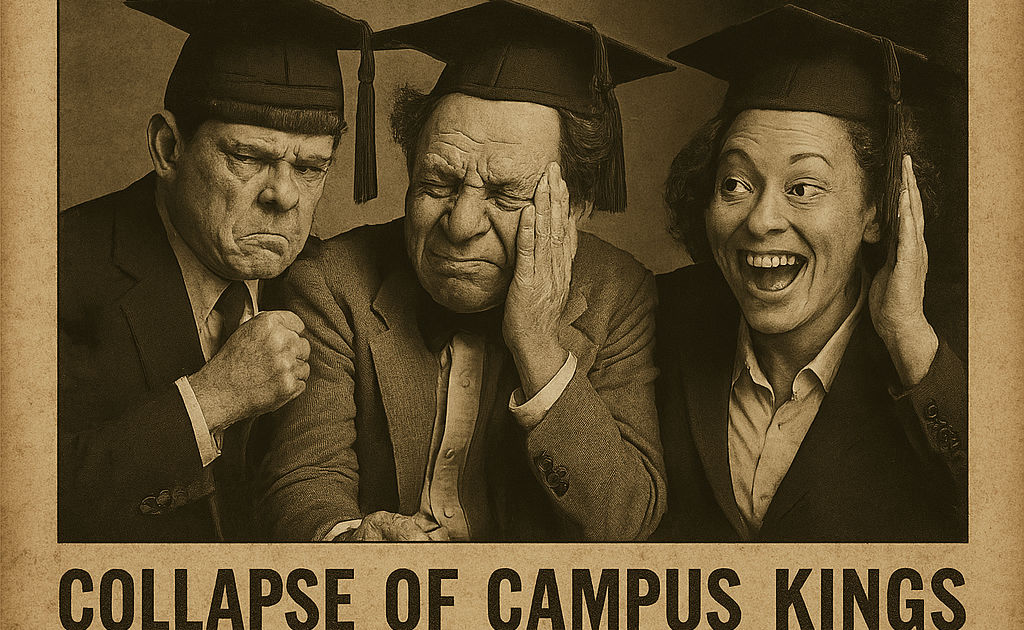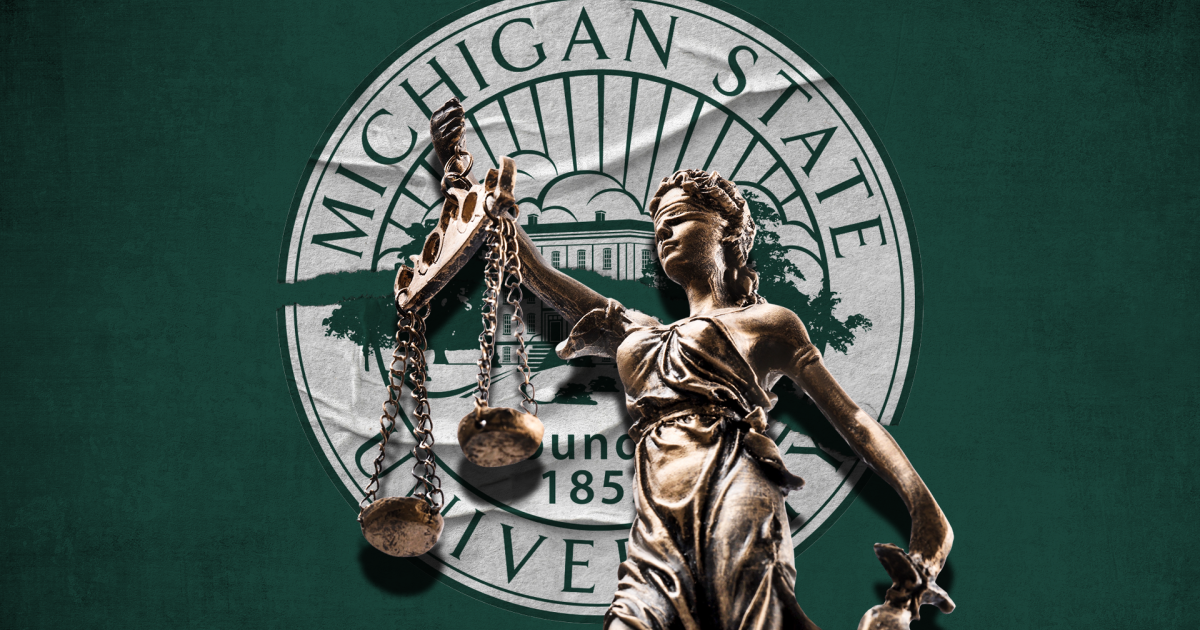Good news for students in England. Providers will soon be subject to tough new rules that ensure they’re treated fairly. But only if they’re in a new provider. Elsewhere, it seems, the unfairness can reign on!
Just a few days before applications to join its register reopen, the Office for Students (OfS) has published consultation outcomes and final decisions on reforms to its registration requirements.
It sets out the regulator’s decisions following its February 2025 consultation on changes to the entry conditions that higher education providers have to meet to register with OfS, and therefore access student loan funding. It covers:
- A new initial condition C5 (treating students fairly), replacing the old consumer protection and student protection plan conditions (C1 and C3).
- New governance conditions E7, E8 and E9, replacing the old governance requirements (E1 and E2).
- Tighter application requirements, including more detailed financial planning, declarations about investigations, and restrictions on resubmitting applications after refusal.
Conusingly, the changes interact closely with two separate consultations on subcontracting.
First, in January 2025 the Department for Education consulted on requiring delivery providers in franchised or subcontractual arrangements to register directly with OfS for their students to be eligible for student support.
Then, in June 2025 OfS ran its own consultation on the regulation of subcontracted provision, focusing on how such providers would be assessed, overseen, and held accountable if brought into the system.
These reforms don’t themselves impose registration on subcontracted delivery providers, but they prepare the ground – the new conditions clarify how subcontracted applicants could meet C5 and related requirements, and OfS signals that it is ready to align with whatever the government decides on the January DfE proposals.
Chin plasters
We’re several months on now from the initial jaw on the floor moment, but by way of reminder – the main proposals on treating students fairly are justified as follows:
Providers are facing increasing financial challenges. They must have effective management and governance to navigate those challenges in a way that delivers good student outcomes. Where providers are making tough financial decisions, they must continue to meet the commitments they have made to students. Our engagement with students shows that being treated fairly is very important to them and suggests that too often this does not happen.
Against that backdrop, and repeated never-met promises to act to address student protection issues, you’d have thought that there would be progress on what is happening inside the 429 providers already on the register. Alas not – its centrepiece proposals on treating students fairly are only to apply to new providers, with a vague commitment to consult on what might be applied to everyone else (closing the stable door) at some point down the line (one the horse has bolted).
But worse than that, in its infinite wisdom OfS has somehow managed to concoct a situation where for this tiny group of new providers, it will:
- Remix lots of existing consumer protection law so that instead of talking about consumer rights, it talks about treating students fairly
- In some areas go further than consumer protection law, because OfS can and has decided to in the student interest
- In some areas not go as far as consumer protection law, because…. reasons?
On the topline, what’s now being introduced is a new initial registration condition – C5, “treating students fairly” – that will replace the old consumer protection entry tests for providers seeking to join the OfS register.
Instead of simply requiring a university or college to show that it has “had due regard” to CMA guidance, applicants will have to demonstrate that they treat students fairly in practice.
To do that, OfS will review the policies and contracts they intend to use with students, and judge them against a new “prohibited behaviours” list, a detriment test, and any track record of adverse findings under consumer or company law. In effect, OfS is shifting from a box-ticking exercise about compliance to an upfront regulatory judgement about fairness.
Providers will have to publish a suite of student-facing documents – terms and conditions, course change policies, refund and compensation policies, and complaints processes – which together will constitute their student protection plan.
And the scope of the new condition is deliberately broad – it covers current, prospective, and former students, higher education and ancillary services like accommodation, libraries, or disability support, and information issued to attract or recruit students, including advertising and online material. In short, C5 sets a new standard of fairness at the point of entry to the system, at least for those providers trying to join it.
Students aren’t consumers, but they are, or are they
The problem is the relationship with consumer law. OfS is at pains to stress that new Condition C5 sits comfortably alongside consumer law, drawing on concepts that will be familiar to anyone who has worked with CMA guidance.
It makes use of the same building blocks – unfair terms, misleading practices, clarity of information – and even names the same statutes.
But we’re also reminded that C5 is not consumer law – it’s a regulatory condition of registration, judged and enforced by OfS as a matter of regulatory discretion. That means satisfying C5 doesn’t guarantee compliance with the Consumer Rights Act 2015 or the Digital Markets, Competition and Consumers Act 2024, and conversely, complying with the Act doesn’t automatically secure a pass on C5. The frameworks overlap, but they don’t align.
In some respects C5 goes further. By creating its own “prohibited behaviours list”, OfS has declared that certain contractual terms – which the Consumer Rights Act 2015 would only treat as “grey list” risks – will always be unfair in the student context. Examples include terms that allow a provider to unilaterally withdraw an offer once it has been accepted, clauses that limit liability for disruptions within the university’s own control (like industrial action), or refund policies that impose unreasonable hurdles or delays.
The list also bans misleading representations such as claiming “degree” or “university” status without proper authority, omitting key information about additional compulsory costs, or publishing fake or cherry-picked student reviews. It even extends to the legibility and clarity of terms and policies, requiring that documents be accessible and understandable to students.
C5 also sweeps in documents that may not ordinarily have contractual force, like course change policies or compensation arrangements, and makes them part of the fairness test. In that sense, the regulator is demanding a higher standard than the law itself, rooted in its view of the student interest.
But in other senses, C5 lags behind. Where DMCC now treats omissions of “material information” as unlawful if they’re likely to influence a student’s decision, C5 only bites when omissions cause demonstrable detriment, judged against whether the detriment was “reasonable.”
DMCC introduces explicit protections for situational vulnerability, and a statutory duty of professional diligence in overseeing agents and subcontractors – neither concept is reflected in C5. DMCC makes universities liable for what their agents say on TikTok about visas or jobs – C5 says providers are accountable too, but stops short of importing the full professional diligence duty that the law now demands. DMCC makes clear that the full price of a degree needs to be set out in advance – including anything you have to buy on an optional module. C5 not so much.
We will protect you
The problem with all of that from a student point of view is that the Competition and Markets Authority is going to take one look at all of this and think “that means we don’t have to busy ourselves with universities” – despite the rights being different, and despite no such regulation kicking in in the rest of the UK.
And worse, it makes the chances of students understanding their rights even thinner than they are now. On that, some respondents asked for wider duties to ensure students actively understand their rights – but OfS’ response is that its focus is on whether documents are fair, clear, and not misleading, and that if issues arise in practice (like if notifications flag that students aren’t being given fair or accurate information), OfS can require further information from the provider and take action.
How on earth students would know that their rights had been breached, and that they can email an obscure OfS inbox is never explained. Even if students find the webpage, students are told that OfS “will not be able to update you on the progress or outcome of the issue that you have raised”.
They’d likely make a complaint instead – but even if they got as far as the OIA, unless I’ve missed it I’ve never seen a single instance of OfS taking action (either at strategic/collective level or individual) off the back of the information I’m sure it gets regularly from its friends in Reading.
I suspect this all means that OfS will now not publish two lots of information for students on their rights, depending on whether they’re new or existing members of the register – because like pretty much every other OfS strategy on the student interest, students are framed as people to be protected by a stretched mothership rather than by giving them some actual power themselves.
I can make an argument, by the way, that sending complaints to lawyers to be assessed for legal risk to the provider, routinely ignoring the OIA Good Practice Framework, refusing to implement an OIA recommendation, not compensating a group when an individual’s complaint obviously applies to others who didn’t complain, using NDAs on complaints that don’t concern harassment and sexual misconduct, deploying “academic judgment” excuses on any appeal where the student is let down, or the practice of dragging out resolutions and making “deal or no deal” “goodwill” offers to coax exhausted students into settling are all pretty important fairness issues – but the relationship with the OIA in a whole document on fairness is barely mentioned.
As usual, almost nothing has changed between proposals and outcome – but there’s a few nuggets in there. “Information for students” has been replaced with “information about the provider” – to make clear the duty extends beyond enrolled students and covers all marketing/info materials. The problem is that under DMCC stuff like, for example, misleading information on the cost of living in a given city is material, but under OfS “treating students fairly” doesn’t appear to be “about” the provider.
OfS has clarified that its concerns about “ancillary services” only applies where there is a contract between student and provider (not with third parties), but has added that providers are responsible for information they publish about third-party services and expects universities to exercise “due diligence” on them and their contracts.
Some language has been more closely aligned with the DMCCA on things like omissions and fake reviews), and in its “detriment” test providers now must do “everything reasonable” rather than “everything possible” to limit it.
Banned practices
In some ways, it would have been helpful to translate consumer law and then go further if necessary. But looking at the overlap between the CMA’s unfair commercial practices regime and OfS’s prohibited behaviours list reveals some odd gaps.
OfS has borrowed much of the language around misleading marketing, fake reviews, false urgency, and misused endorsements, but it has not imported the full consumer protection arsenal. The result is that students don’t seem to be guaranteed the same protections they would enjoy if they were buying a car, a washing machine, or even a mobile phone contract.
General CMA guidance prevents companies from mimicking the look of competitors to confuse buyers – but the practice is not explicitly barred by OfS. The CMA bans direct appeals to children – no mention of the vulnerable consumer / due diligence duties in OfS’ stuff. Under DMCC, a practice that requires a consumer to take onerous or disproportionate action in order to exercise rights that they have in relation to a product or service is banned – but there’s little on that from OfS.
Fee increases
One note on fees and increases – in the response, OfS points to a “statement” that anyone with an Access and Participation Plan has to submit on whether it will increase fees. It supposedly has to specify the “objective verifiable index” that would be used (for example, the Retail Price Index or the Consumer Price Index), in all cases the amount must not exceed the maximum amount prescribed by the Secretary of State for Education, and under consumer protection law, all students must have a right to cancel a contract in the event of a price increase, even where that price increase is provided for in the contact.
Here’s the first five I found in approved Access and Participation Plans on Google:
- “Our intention is to charge the maximum fee, subject to the fee limits set out in Regulations” (the doesn’t seem compliant to me)
- “We will not raise fees annually for 2024-25 new entrants” (that one from a provider that has announced that it will after all)
- “We will not raise fees annually for 2024-25 new entrants” (that from a provider who now says that for those who started before 1 August 2025, the continuing fee will be £9,535)
- “We will not raise fees annually for new entrants” (that from a provider that now says “the fee information and inflation statement provided on page 69 of our 2025/26 to 2028/29 Access and Participation Plan are no longer current)
- “Subject to the maximum fee limits set out in Regulations we will increase fees each year using RPI-X” (what it’s actually doing is increasing its fees by RPI-X as projected by the OBR, which is a very different figure, and no way would pass muster as an “objective verifiable index”
I’d add here to this utterly laughable situation that the CMA is very clear that the right to cancel in the event of a material change or price increase has to be exercisable in practice:
In the HE sector, switching course or, in some cases, withdrawing and switching HE provider, is likely to be difficult or impractical in practice, bearing in mind that in many cases the student will not be able simply to transfer their credits to another HE provider, and so saying the student can switch may not improve matters for them, or alleviate the potential unfairness of a variation.
I’m not sure there’s a provider in the country that’s compliant with that.
Wider changes
On its reforms to registration requirements, the exciting news is that rather than introduce one new Condition of Registration, there’s going to be three – E7 (governing documents and business plan), E8 (fraud and inappropriate use of public funds) and E9 (on fit and proper persons, knowledge and expertise).
In the future, providers will have to submit a defined set of governing documents at registration – replacing the previous reliance on self-assessment against public interest governance principles. Providers will also have to submit a clear and comprehensive five-year business plan showing objectives, risks, compliance with ongoing conditions, and consideration of students’ interests.
Specific senior roles (chair of governing body, accountable officer, finance lead, and an independent governor) will have to demonstrate sufficient knowledge and expertise, usually tested through interviews. And a new fit and proper persons test will mean that those in senior governance and management roles will be subject to checks on past conduct (e.g. fraud, misconduct, behaviour undermining public trust).
Providers will also have to have comprehensive and effective arrangements to prevent, detect, and stop fraud and the inappropriate use of public funds. A “track record” test also applies, the upshot of which is that relevant convictions or regulatory sanctions within the past 60 months could bar registration unless exceptional circumstances apply.
You’ll not be surprised to learn that in the consultation, some worried that the changes would increase bureaucracy, slow down registration, and impose disproportionate burdens on smaller providers. Others objected to the removal of self-assessment against the Public Interest Governance Principles (PIGPs) at the point of registration, fearing this would dilute student protection or cause confusion given that PIGPs still apply on an ongoing basis.
Concerns were also raised about creating a two-tier system where new entrants face tougher entry requirements than established providers, and about the practicality of requiring a five-year business plan when forecasting beyond two or three years is often unrealistic. Many also questioned a new interview requirement for key individuals, seeing it as costly, stressful, open to coaching, and potentially inconsistent. Just like student assessment!
OfS was right all along, of course – arguing that the new conditions give stronger protection for students and taxpayers, that the five-year planning horizon is essential to test medium-term sustainability, and maintains that fit and proper person interviews are the most effective way to test leadership capacity.
If you were one of the handful of respondents, it wasn’t all in vain – the phrase “policies and procedures” is now “policies and processes”, OfS has clarified the level of knowledge required (the chair and independent governor only need “sufficient awareness” of student cohorts rather than detailed operational knowledge) and a minimum requirement for fraud prevention arrangements is now in the actual condition (rather than just in guidance).
Registering with OfS
Much of that is now reflected in a tightening of the registration process itself. Applicants will now be required to submit a defined set of final, governing-body-approved documents at the point of application – including governing documents, financial forecasts, business plans, and information on ownership and corporate structure.
The idea is to eliminate the previous piecemeal approach, under which providers often submitted partial or draft materials, and to ensure that applications arrive complete, coherent, and capable of demonstrating that a provider has the resources and arrangements necessary to comply with the ongoing conditions of registration.
Some argued that the shift makes the process more rigid and burdensome, particularly for smaller or specialist providers, and warned that requiring fully approved documents could create practical difficulties or delay applications. Others were worried about duplication with other regulators and barriers to entry for innovative providers.
Again, OfS is pressing on regardless, arguing that a standardised approach will improve efficiency and consistency, while promising proportionate application of the rules, detailed guidance on the required documents, and limited flexibility where a final document cannot yet exist.
To the extent to which some might argue that a heavy and complex burden is a tough ask for small new providers – and runs counter to the original Jo Johnson “Byron Burgers” vision, the message seems to be that it turns out that scale and complexity is required to protect public money and the student interest. It would arguably be a lot easier (on both OfS and Independent HE’s members) if DfE was to just say so.
Defeat from the jaws of victory
Sometimes, OfS gets close to getting it – finally, an education regulator properly thinking through the ways in which students are treated unfairly – only to go and spoil it and say something stupid like “this will only apply to new providers”.
As I noted when the consultation came out, what we now have is one set of rights for students in a new(ly registering) provider that they’ll never be proactively told about, and another set of much weaker ones for everyone else that they’re not told about either, all in the name of “fairness”, at exactly the point that the regulator itself admits is one where providers are under pressure to not deliver on some of the promises they made to students.
The lack of justification or explanation for that remains alarming – and while cock up is often a better explanation than conspiracy, it’s hard to conclude anything other than OfS has proactively decided to turn a blind eye (while blindfolding students) to existing unfairness while everyone gets their cuts done. What a time to be a student.










